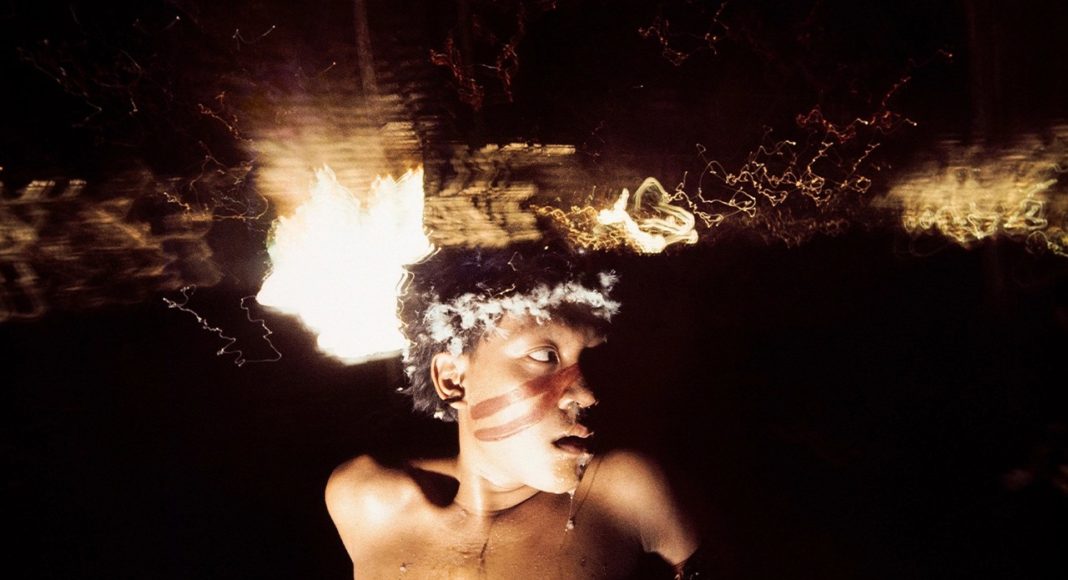- Swiss-born Claudia Andujar fled Europe as a child at the end of World War II, and spent much of her later life in Brazil, becoming a celebrated photographer.
- In her adopted homeland, she found a strong affinity with the Yanomami Indigenous people, for whom she was an advocate for the establishment of their own territory — something that came to pass in 1992 as Brazil prepared to host the Rio Earth Summit.
- Now aged 90, Andujar remains deeply concerned for the people with whom she says she “totally identified,” noting that the present threat of illegal mining in Indigenous territories is doing far more harm than the government-driven road projects of the 1970s.
- Andujar’s years of work and life with the Yanomami are now chronicled in a major photo exhibition at London’s Barbican Centre through Aug. 29.
“This small place in the immensity of the Amazon forest is my place and will always be so. I am linked to the Indians, to the land, to the fundamental struggle.”
Claudia Andujar, the renowned Brazilian photographer, is celebrating her 90th birthday this month, and to commemorate her achievements, as a photographer, artist and an Indigenous campaigner, the London exhibition center the Barbican is holding a major exhibition of her work.
Andujar personally experienced two horrifically traumatizing 20th century events half a world apart: the Holocaust in Europe, and the Indigenous Yanomami’s struggle for survival in the Brazilian Amazon. It is probable that without Claudia’s tireless efforts as an Indigenous advocate that Brazil’s then–president, Fernando Collor de Mello, would not have created the Yanomami Indigenous Territory (covering 9.7 million hectares, or 23.9 million acres), on the eve of the Earth Summit in Rio de Janeiro in 1992 — a great victory for the Yanomami and an inspiration to Indigenous people around the world.
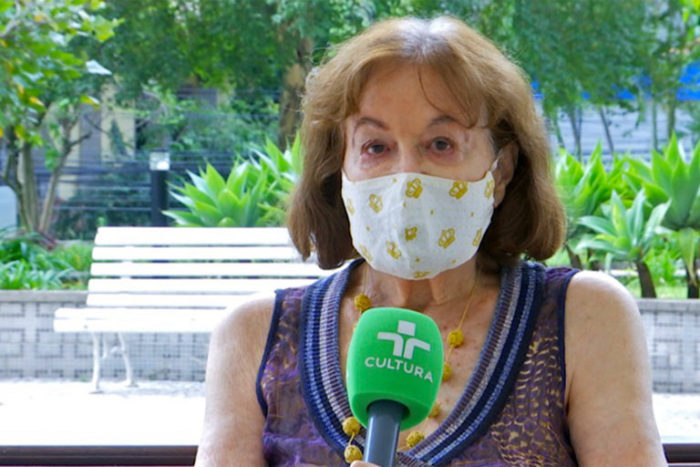
Life under the Nazis
Born in Switzerland and brought up in Transylvania, then part of Hungary, Claudia had a Hungarian Jewish father and Swiss Christian mother. After her parents separated, she went to live with her mother. “My father disappeared in the early 1940s. I was a child and didn’t know what was going on, but I just had this feeling that something terrible was happening,” she recalls. She knew that the Hungarian government, allied to Nazi Germany, was “looking for people with connections,” and she felt personally under threat.
Several years after the war Claudia learned that her paternal grandmother was murdered at Auschwitz and her father at Dachau. “It is something I have carried all my life, the guilt of the survivor.”
After Germany invaded Hungary in 1944, and Russia invaded the country in 1945, her mother decided to move the family to Switzerland. But she had no inkling of the perilous journey ahead. As the war entered its final phase, Hungary was being heavily bombed by the Allies, particularly the Americans.
“The whole trip was traumatic,” Claudia remembers. “We had to travel across Hungary to reach the Austrian border and then reach Vienna. We left everything behind. We traveled on freight trains, and they were bombed every day. We repeatedly found the bridges we needed to cross had been destroyed and we had to find another way. A trip that normally takes 12 hours took a month.”
When the family reached the border between Hungary and Austria, Claudia’s mother became very ill, with a high fever. “They only let us over the border because they didn’t want her to infect a lot of people.” Once in Vienna, her mother was diagnosed with scarlet fever and placed in an isolation ward.
Only 13 years old, Claudia had to fend for herself on the streets of the Nazi-controlled city and report to the Gestapo daily. Once, in an air raid shelter located below the Gestapo headquarters, she heard people speaking Hungarian. Realizing they were Jewish prisoners because of the yellow stars they wore, she rushed over, desperate for news of her father. Horrified, the prisoners shooed her away, fearful that she too would be arrested.
After two months, her mother was discharged from hospital and the two made their way to Switzerland. Her mother then sent Claudia to live with her paternal uncle in the United States. But Claudia found it difficult to adapt to the strict discipline in the household and left as soon as she could. She spent a couple of happy years working at the United Nations in New York City as a guide, but in 1955 decided to rejoin her mother, who had married a Brazilian.
Into the Amazon
Claudia settled in quickly in Brazil. “It’s the country where I feel most at home,” she says. “From the beginning I felt there was a freedom that I didn’t feel in the U.S.A. I believed I could start a new life.”
She traveled widely in South America, almost always alone. “I developed a relationship with my camera. It became my traveling companion.” She found work as a photojournalist, renowned for her willingness to travel into dangerous regions. Claudia also discovered that she had an affinity with Indigenous peoples. “I always felt very well with them. I found something I had not found in Europe, nor in the U.S.A., nor in city life. I could identify with them.”
It was in 1970 when she encountered the Yanomami on an Amazon work trip. “They still practiced a traditional way of life, but Salesian missionaries, who had set up a base in the Yanomami land, wanted to convert them to Catholicism. They were conflicted.” She quickly established a close rapport. “Culturally, I had to learn everything from them but, from a personal point of view, I totally identified with them from the beginning.”

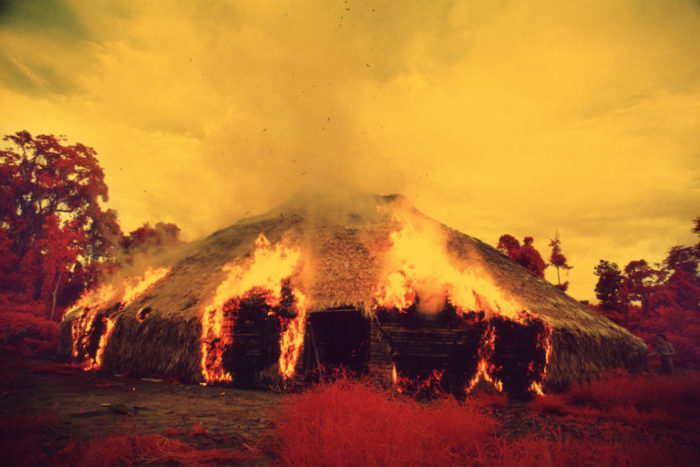
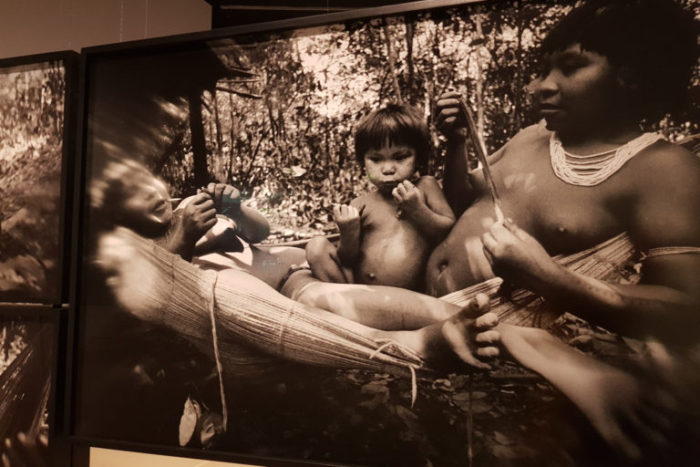
Journalists have often assumed that she related well with the Yanomami because, like the Jews in Europe under Hitler, they were an oppressed minority. But Claudia denies this: “It was not because they were oppressed. When I first knew them, they were not being persecuted. But I felt very much at home. They became my family.” She decided to give up photojournalism, but she still kept her camera. She lived with them for three happy years.
“I found myself doing long treks through the forest. I remember the sweat dripping from my forehead and my nose, burning my eyes. We walked for hours, men, women, children, newborn babies on their mothers’ backs, a night monkey clinging to a woman’s hair, the hammocks, the pots, everything on the move. For the Indians, the forest is like the city to us. They know every turning.”
The coming of conflict
This peace was violently disrupted in 1973. Brazil’s military dictatorship, then at the height of its power, decided to build a highway across the northern frontier of the country to promote national security. The road was never completed but it wrought havoc on the Yanomami. “The construction companies brought in unskilled laborers to do the heavy manual work. They disrupted village life and brought in diseases. From 1973 to 1975, some villages lost one-fifth of their population,” Claudia remembers.
The road also brought gold prospectors and repeated invasions of Indigenous ancestral lands, along with escalating violence, all of which convinced Claudia that the Yanomami needed their own protected territory.
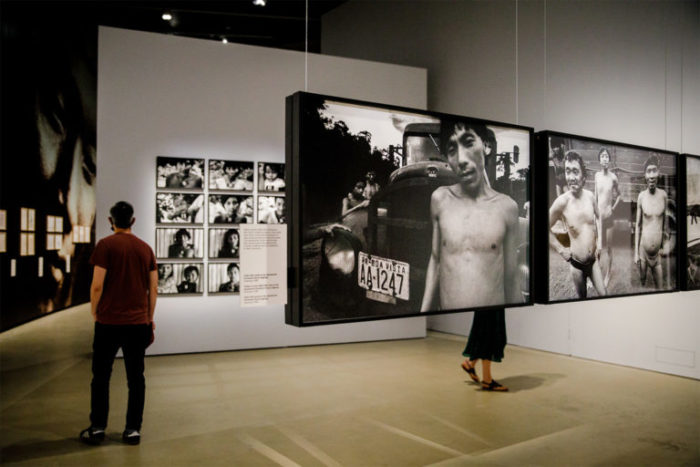
She traveled to São Paulo where she co-founded the Commission for the Creation of the Yanomami Park (CCPY). Campaigning tirelessly, she gained the support of many anthropologists, but didn’t achieve her goal until after the end of the military dictatorship. In June 1992, anxious for a high-profile initiative to announce at the Rio Earth Summit, President Collor de Mello created the Yanomami Indigenous Territory with great fanfare.
Though the borders of this Indigenous reserve were supposed to be well protected by the Brazilian government, the invasion of Yanomami land by gold prospectors has persisted to today, when more than 20,000 illegal miners, well supported with money, heavy equipment and airstrips, and backed by a shadowy criminal elite, continue to conflict — sometimes violently — with the Yanomami.
Authorities have repeatedly evicted the prospectors but, once the police leave, the invasions recommence. “The harm done by the gold prospectors is far worse than the damage done by the construction companies,” Claudia says.
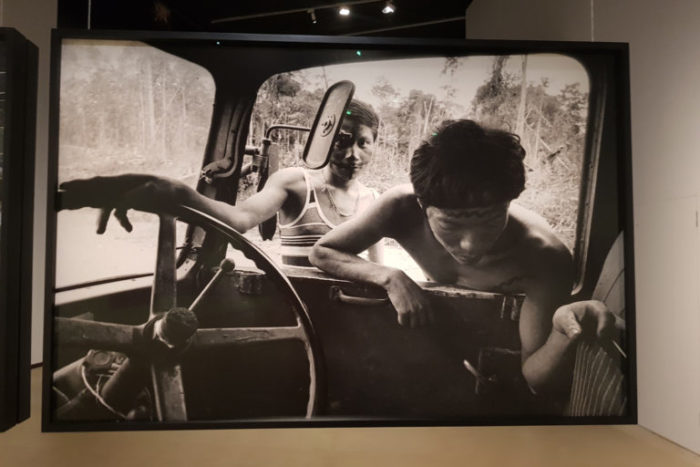
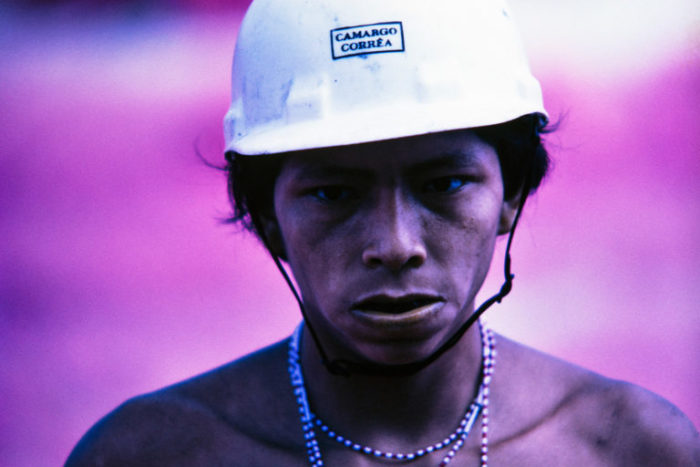
The Yanomami under Bolsonaro
The staging of the London exhibition comes at a crucial time for the Yanomami. Since Jair Bolsonaro took office in 2019, the president (an outspoken enemy of Indigenous land rights) has repeatedly pushed to authorize mining on Indigenous lands — without their consent — and an administration-sponsored bill is currently moving through Congress to legalize that invasion.
In May 2021, Bolsonaro made his first trip to an Indigenous territory as head of state, inaugurating a bridge in São Gabriel da Cachoeira municipality in Amazonas state. Yanomami leaders have repeatedly opposed the construction of the bridge, saying that it will make it easier for miners to invade their land.
Violence flared recently. According to reports from the Yanomami, on May 10 several boatloads of miners opened fire on the Palimiú community, beside the Uraricoera River, where gold miners have been operating illegally since the 1980s. The miners continued firing for half an hour, the Yanomami say. In the chaos, Yanomami children fled into the rainforest to hide. Two days later, the bodies of two children, a 1-year-old and a 5-year-old, were discovered floating in the river. On May 16, 15 boats full of miners opened fire on the same community. On June 13, three boats of miners launched a further attack on Palimiú.
Then, on June 16, the Yanomami say that another community, Korekorema, also located near the Uraricoera River, came under fire. Korekorema is one of three new areas that the miners recently started exploiting. According to the Hutukara Yanomami Association, the main Yanomami representative body, the Yanomami have suffered five attacks in a month.
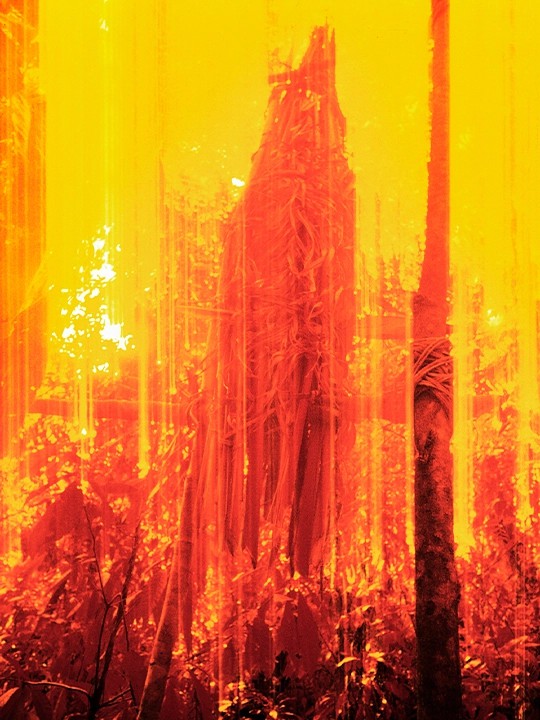
Yanomami organizations have sent numerous appeals to the Bolsonaro government for help. At a May 15 press conference in Boa Vista, the capital of Roraima state, Yanomami leader Timóteo Palmithëri said: “We are exhausted and barely able to hold out. Please, it’s urgent … If the army and police don’t act now, many Indigenous people will certainly die.”
Illegal invasions are not the Yanomami’s only problem. A lethal combination of malaria and COVID-19 is devastating their health and ability to feed themselves; the Yanomami and other Indigenous groups accuse Bolsonaro of dismantling rural health services and abandoning them. A shocking photo of a severely malnourished Yanomami child, suffering from malaria, pneumonia and dehydration, posted on Facebook in mid-April, has gone viral, adding to the pressure on Brazilian authorities to act.
On May 24, Supreme Federal Court Justice Luiz Roberto Barroso ordered the government to immediately take “all necessary measures to protect the lives, health and security of the Yanomami.” Three weeks later, on June 14, the minister of justice and public security authorized the security forces to go to the Palimiú region for 90 days to restore order. According to the Hutukara Yanomami Association, the force had not arrived by June 20.
The Yanomami territory has endured illegal invasions by miners for four decades now, but since Bolsonaro came to power, the occupations have become deadly, with the miners likely emboldened by Bolsonaro’s incendiary rhetoric and acting with ever-increasing confidence.
According to information collected by the Amazonian Network of Georeferenced Socioenvironmental Information (RAISG), the miners have opened 43 mines along the Uraricoera River. Ever since the Yanomami decided they would try to intercept the flow of goods to the mines, Palimiú has become the epicenter of a conflict with the illegal miners.
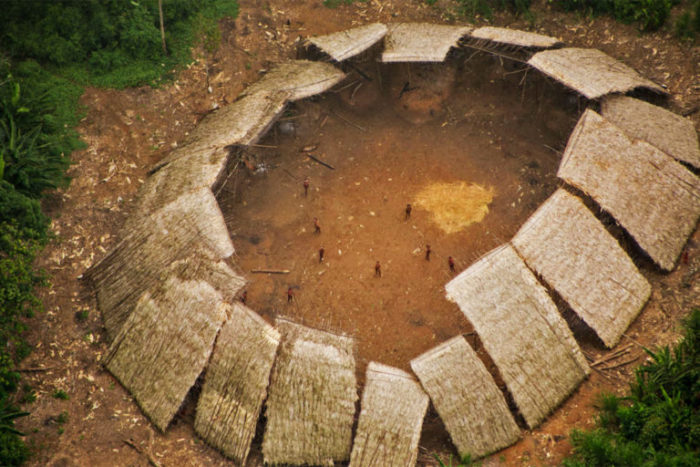
In March this year, the Hutukara Yanomami Association, with technical assistance from the Socioenvironmental Institute (ISA), an NGO, published a study titled “Scars in the Forest: Evolution of Illegal Mining in Yanomami Indigenous Land in 2020.” It drew attention to “the widespread use of expensive and heavy machinery and the operation of an extensive and complex multimodal logistical network (land, river and air).”
It is clear, the report says, that the miners, once wildcat prospectors acting on their own initiative, now have powerful backers. According to Fiona Watson, advocacy director at the NGO Survival International, “Mining corporations are now poised in the wings with applications to mine in many Indigenous territories, including the Yanomami territory which has received one of the highest number of applications.”
All of this presents an unprecedented threat to the Yanomami, including groups of uncontacted Yanomami known to be living in the territory. Davi Kopenawa, a Yanomami leader and shaman, has repeatedly warned that an isolated uncontacted group, known as the Moxihatatea, are in grave danger. “They have fled many times,” he says. “But now they can no longer run away and are surrounded by violent miners who want to take revenge by shooting.” Working through Survival International, the Yanomami have made a direct urgent online appeal to the global public in the hope that people will intercede with the Brazilian government and demand immediate action to halt illegal mining within the Indigenous territory.
Photos from the Claudia Andujar exhibition at the Barbican. All images courtesy of the Barbican Centre
Thyago Nogueira, the curator of the Barbican exhibition, says he is shocked by the political relevance the new show is achieving. “This was supposed to be a historical show, a homage to Claudia, the Yanomami and their collaboration. We didn’t imagine history was going to repeat itself with the same level of ignorance and violence that we saw during Brazil’s dictatorship. We thought we had overcome some of these problems, but now they are back and enforced by our current government’s politics and negligence.”
In the past, the Yanomami have proved tenacious survivors, Claudia says. “The Yanomami have many reasons not to be happy. But still, when you go to one of their villages, unless they are very sick, they will still smile and lark around. This somehow means that, when they get out of one of these dramatic situations, they are able to reconstruct their lives again.” Whether their resilience will be sufficient to see them through what may well be the most serious crisis in their long history is, as yet, unknown.
Additional reporting by Jan Rocha.
Claudia Andujar’s exhibition, “The Yanomami Struggle,” runs at the Barbican Centre in London, U.K., from June 17 to Aug. 29, 2021.
Banner image: Claudia Andujar’s photos often express the powerful internal life of the Yanomami. For them the forest, the animals, birds and fish it contains are full of xapiripë or spirits who speak to them. When asked how she got the special dark effect in her photos, most of which were taken in broad daylight, Claudia replied: ‘I shut down two stops’ (which means setting the lens on manual, two aperture settings below what the light meter tells you is right). Photo by Claudia Andujar. Image courtesy of the Barbican Centre.

